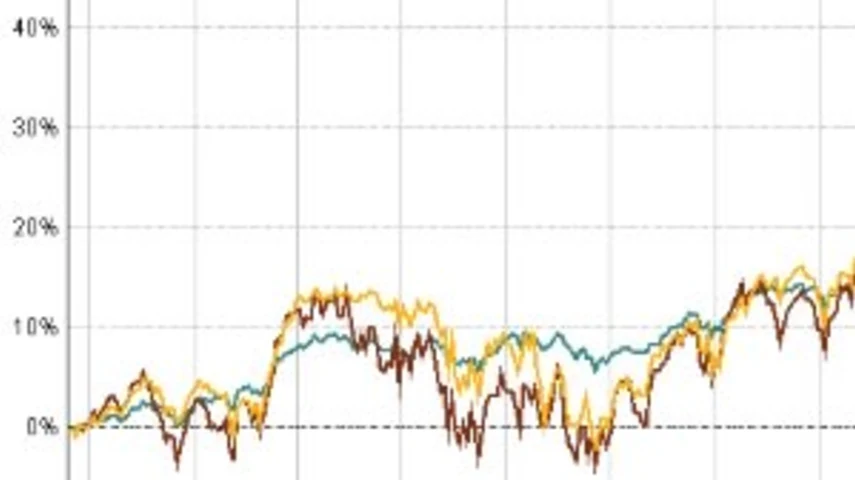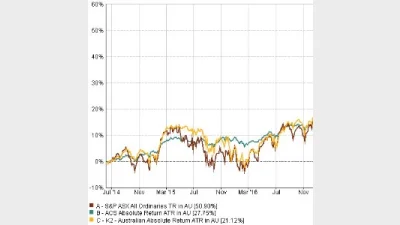Fact check: K2 Australian Absolute Return Fund



Approaching its 20th anniversary, the K2 Australian Absolute Return Fund is taking full advantage of its investment mandate and preparing for a market downturn.
It aims to deliver consistent absolute returns over the investment cycle by investing in undervalued companies, with a focus on capital protection during periods of market decline. The equities fund, which was launched in October 1999, has a flexible remit and can adapt its style depending on the market circumstances.
In its product disclosure statement (PDS), the firm notes: “K2 has a flexible investment style as we believe there is no one uniform cycle across the investment universe. By adopting the most appropriate style (for example, growth, value, momentum or income) that is best suited to the current market conditions allows K2 to maximise risk-adjusted returns.”
As well as its equity exposure, the fund has the ability to short sell when specific opportunities have the potential to increase returns, which the firm said was an additional source of alpha, and to hedge currency as way of protecting offshore returns.
It’s managed by K2 managing director Campbell Neal, joint chief investment officer David Poppenbeek and portfolio managers Josh Kitchen and Nicholas Leitl, who have over 100 years’ experience in the financial services industry combined. Assets are currently $144m, although this has been falling down from $246m a year ago.
In light of the flexible mandate provided to them, the managers are utilising this and currently opting to hold a large proportion of the fund in cash. Within its remit, the fund can hold up to 100 per cent in cash if it is deemed appropriate and over the tenure of the fund, it has held an average of 28.3 per cent in this asset class.
The weighting has been increasing steadily over the last 18 months and is now at 70 per cent, the highest since inception, which the firm said was “prudent” as a reaction to market performance as it believed a downturn was on the horizon and was also waiting for a rotation from growth into value.
The ASX All Ordinaries index has returned 7.3 per cent over one year, which K2 felt were unsuitable conditions for a value-biased fund.
Given a target of the fund is to act with a capital preservation mindset rather than growth, it said many clients were not expecting it to “shoot the lights out” in terms of performance so they understood the managers’ choice. Nevertheless, the firm said it had increased its communication with clients to provide consistent messaging on the portfolio’s positioning and its PDS points out the potential risk level of the fund is ‘high’.
Performance
Since inception, the fund has performed strongly, beating both the sector and its ASX All Ordinaries index over the period. The graph below shows the five-year performance of these three options.
According to its mandate, it aims to achieve more than 10 per cent per annum over the long term; since its launch it has returned an average of 10.5 per cent per annum.
In 2017/18, it returned 13 per cent, more than double the ACS Absolute Return sector average and placing it among the top funds of that year in its sector.
However, markets recently have been less favourable for them with the fund losing 7.5 per cent over the past 12 months, according to FE Analytics. But K2 is far from the only fund to suffer in this period with the sector averaging returns of just 0.6 per cent.
The fund steadily tracked the sector and benchmark for its first decade until March 2009, during the global financial crisis, when it pulled away and reported more volatile performance. While this is possible for absolute return funds, it is less desirable for those funds where ‘capital preservation’ is at the forefront.
The gap between the fund and its indices widened further in 2016 and since January 2016, the fund has returned 14 per cent, three times less than the ASX All Ordinaries index returns of 41 per cent over the same period.
Nevertheless, the firm is sticking to its guns regarding its cash weighting and any possible impact on performance. It said that, as a firm, it did not react to short-term market noise and preferred to take a long-term approach to its investments which led to them concluding valuations were too stretched currently and a market downturn was expected.
Performance had also improved, it said, following the Federal Reserve’s decision to raise the Fed funds rate to its highest-ever level of 2.25 per cent to 2.5 per cent in December. This was correct with the fund seeing positive performance of 4.06 per cent from the Fed’s meeting on 18 December to 11 June 2019, according to FE Analytics.
Asked when it could change, the firm said the high level of cash could be in place for at least another six to 12 months until the portfolio managers found an appropriate market level to buy back in.
Recommended for you
Marking off its first year of operation, Perth-based advice firm Leeuwin Wealth is now looking to strengthen its position in the WA market, targeting organic growth and a strong regional presence.
In the latest edition of Ahead of the Curve in partnership with MFS Investment Management, senior managing director Benoit Anne explores the benefits of adding global bonds to a portfolio.
While M&A has ramped up nationwide, three advice heads have explored Western Australia’s emergence as a region of interest among medium-sized firms vying for growth opportunities in an increasingly competitive market.
Private wealth firm Escala Partners is seeking to become a leading player in the Australian advice landscape, helped by backing from US player Focus Financial.











